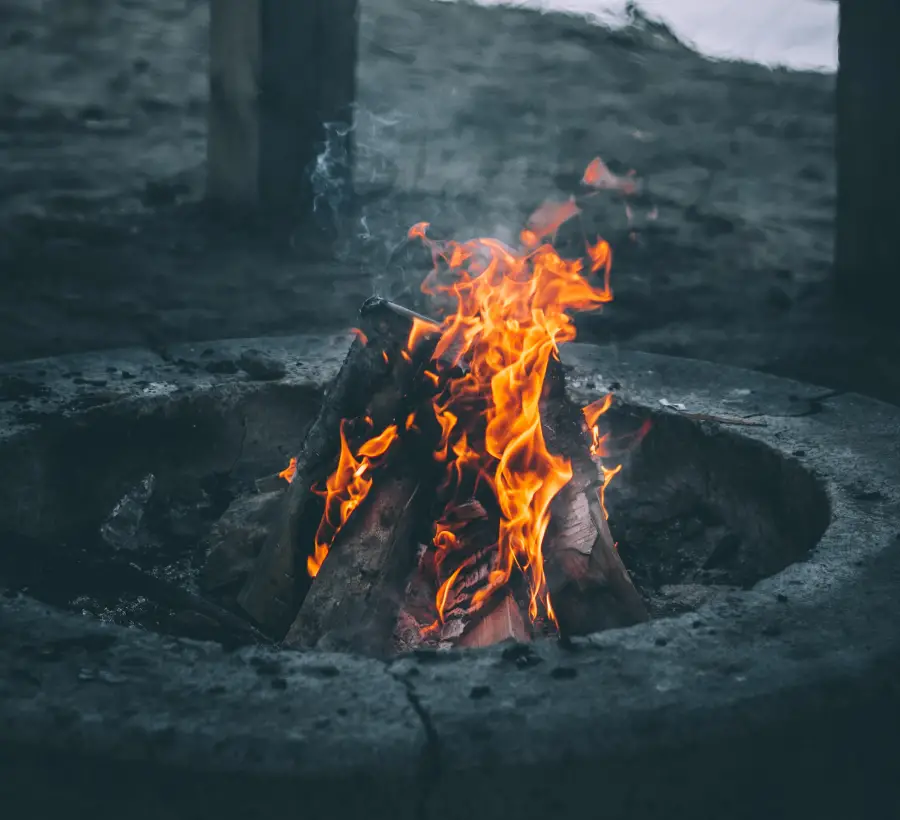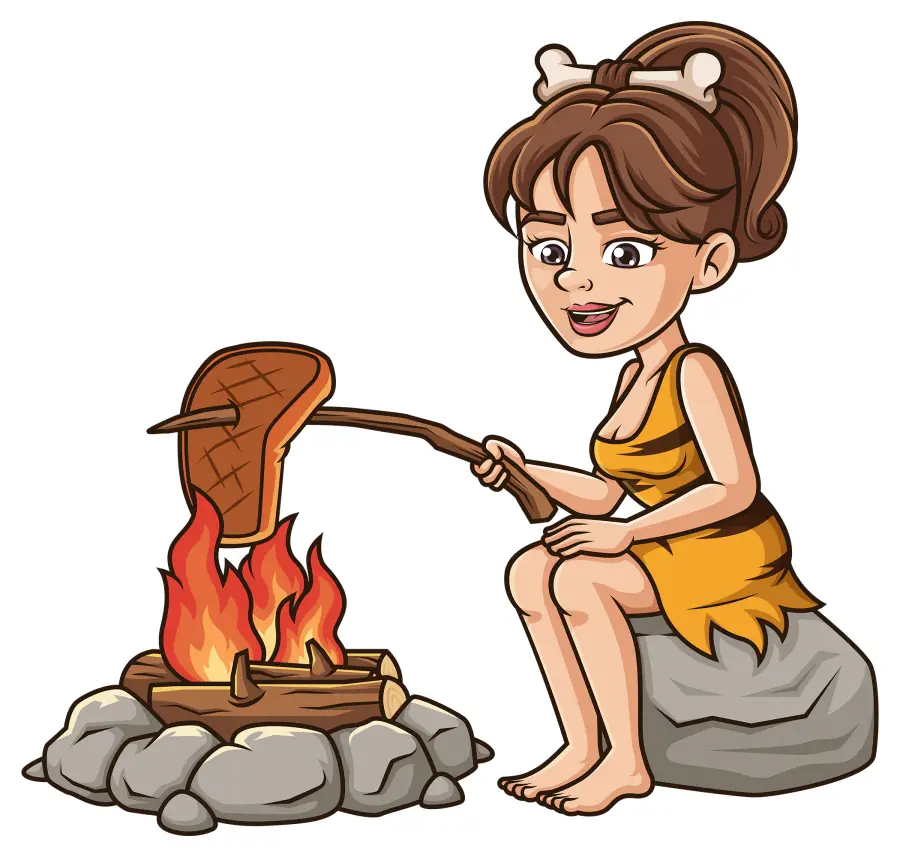Outdoor firepits are, without a doubt, among the most en vogue outdoor touches. Boasting style, function, and versatility, there is a firepit for any yard type and size. You can hardly go wrong with one…or can you? Do you need to worry about drainage for a firepit?
Fire pits need drainage in order to prevent collection of water in the base or oversaturation of the ground underneath. Drains, tarps, covers, and drainage holes all can go a long way in alleviating water buildup in and around both permanent fire pits and portable versions.
Unfortunately, some elements can put a damper (pun intended) on things. Just how do firepit owners deal with water that pools up in fire pits? Is there even a solution? How do those fixed sunken firepits get drained?
All these questions, and more, are answered below.

Contents
Do Fire Pits Need Drainage?
This largely depends on the type and positioning of your fire pit. Fire pits are essentially large bowls or containers that hold firewood. If this is the case, it stands to reason that they can also hold water depending on the construction of the bottom of the pit.
Portable fire pits as well as fixed, built in versions all need drainage of some type. This can be in the form of drainage holes for movable or non-attached versions. For in-ground types of fire pits, drainage catch basins or french drains can be set underneath the bottom of the feature itself.
Let’s look at a few of the options and what their drainage needs might be.
Portable Fire Pit Drainage
Firstly, we have portable fire pits. These are usually made of metal and can either be light enough to carry or feature wheels that make them easy to push around. Naturally, portable pits can easily be moved out of the way before it rains, and they can be tipped over for drainage if water does get into them.
A good thing is that most manufacturers install drainage holes in modern firepits like these. Probably because they know that nobody really wheels their firepit out of the rain. Whatever the reason, it is fair to say that the addition is more than welcome, especially for us forgetful folks.
Sinking a portable fire pit into the ground is an option, but normally this is not a standard practice. Make sure the ground beneath is either able to accept water from the drainage holes or you will need some form of drain.
Built In Fire Pit Drainage
We also have fixed firepits. These consist of either raised platform firepits or sunken firepits. These cannot be moved and are, therefore, more vulnerable to the elements.
Fixed firepits absolutely need some form of drainage, especially when you consider the fact that most are made of (or lined with) metal. Prolonged exposure to water may cause rusting, which may affect your pit’s performance and its appearance.
Even those with sand or earth as a bottom will need some form of drainage since the sides of the pit will normally collect water in a small, concentrated area. A good way to allow water to escape is with an inexpensive french drain system that will wick away the water.
This involves putting a channel of gravel under the center of the pit leading away. In the gravel trench, insert a perforated drainage pipe (either corrugated or PVC) that will collect the water and leach it away to a more acceptable location.
Propane Fire Pit Drainage
Propane firepits have a greater need for drainage than their wood counterparts because of their intricate connections and burners. Any build-up of water in these and you could be facing costly replacements to your setup, which isn’t ideal.
The only risks associated with non-draining wood pits are the potential rusting of metal lining rings and the risk of ashy sludge spreading to and causing unsightly messes. Of course, ashy sludge might not be so much of an issue if the firepit is surrounded by grass, which would actually benefit from the ash.
Therefore, all in all, firepits need some sort of drainage solution for them to remain in the best working order. You also don’t want the water pools to end up forming mosquito breeding grounds either.
Here are some other great articles for you from LawncareGrandpa.com…
- How to Remove a Flower Bed (Answered)
- How to Deal With a Downspout Corner (Revealed)
- What Color Greenhouse Should I Choose? (Revealed)
How Do You Keep Water From Pooling In A Fire Pit?

Prevention is always better than cure, as the saying goes.
Keeping water out of a fire pit can be done by moving portable versions, covering them with tarps or premade covers, and designing flooring with the proper materials to promote natural drainage. Along with these steps, weep holes in the side walls and drains underneath can be installed.
It is always better to keep water from collecting in your fire pit in the first place, and there are several avenues towards this goal.
Moving A Fire Pit To Avoid Water
The first way, as we’ve already mentioned, is to physically move your fire pit to shelter away from the rain. This is perhaps the simplest solution of them all. Unfortunately, this only applies to portable or wheeled pits.
If moving your fire pit is not possible (or if it is too much of a hassle), the next best option is to make use of a tarp to cover the pit and protect it from collecting water.
Covering A Fire Pit
The great thing about tarps is that they work for all types of fire pits, from portable to fixed. They also work for propane pits just as well as they do for wood pits. You can also use your tarp to protect your propane tanks (or firewood) from the elements.
Acquiring a tarp won’t be as simple as moving a fire pit out of the rain, but it is still a highly affordable solution. Tarps are arguably the best solution for fixed pits. Though prices can range widely, you should be able to get your hands on a heavy-duty waterproof tarp for less than US$100 on Amazon.
Speaking of which, check out Xpose Safety’s 6 x 8-foot Super Heavy Duty Multipurpose tarp. This awesome cover will ensure your fire pit stays dry as a bone while also shielding it from the effects of ultraviolet light. The tarp is also made of rip-resistant polyethylene that guarantees all-weather protection for anything it covers.
One thing you need to be careful about when dealing with tarps is fire hazards. Always ensure your fire is out and that the pit has cooled down before you cover it with a tarp.
Premade Fire Pit Covers
Pre-made covers are another way to go. Much like tarps, they allow you to cover your fire pit and shield it from rain and direct sunlight. However, unlike tarps, pre-made covers offer a snugger fit that looks much neater than simply draping a multipurpose tarp over a pit.
These covers are available online or they may be offered by your fire pit installer as an extra. The covers are often made from water-resistant polyvinyl or polyethylene.
Fire Pit Flooring And Drainage
The type of flooring in your fixed pit can also help minimize the occurrence of water pooling. A concrete floor will not allow water to escape that easily. Inversely, a rocky and/or sandy floor will be much better at facilitating drainage.
You can install a catch basin hooked to a drainage pipe in some cases. If you have a sand, dirt, or gravel base you can also employ a french drain to take away collected water.
Lava rocks, in particular, are a go-to flooring option for propane fire pits. The rocks add aesthetic value while also serving a protective function for your burners. Water will trickle through them and into the soil or drain below.
Sand is a good choice for wood pits. Sandy soils allow for quicker drainage than clay soils. It is also easy to shovel out ash-covered sand after using the fire pit.
Outdoor Coverings For Fire Pits
Finally, you can install a shed or outdoor umbrella to protect your fire pit from collecting excess rainwater.
How Do You Drain An In Ground Fire Pit?
The best way to drain an in-ground fire pit is to install a drainage solution when installing it.
When you dig the foundation of your fire pit, you must check the profile of the undersoil. If the soil is sandy, you can go right ahead and start layering on your pit floor rocks and dust.
However, if the undersoil has a clay profile, there’s a good chance your pit could encounter pooling problems. In such a case, you must dig another hole in the middle of the foundation (about one foot in diameter and one foot deep) for drainage. This hole must be filled with ¾-inch quarry stones. The gap between the stones will allow water to trickle down freely.
Once the drainage hole has been filled, layer the rest of the foundation with about 3 inches of damp fine quarry stone and dust mix if you plan to use firewood. Make sure to handstamp the layers at one-inch intervals so the floor is solid.
If your pit uses propane, you can use lava rocks for the rest of the floor.
If your pit still collects excessive quantities of water, you might want to get your hands on a siphoning pump to help you physically get the water out.
Final Touches On Fire Pit Drainage…
If you are planning on using a built in fire pit, a good option to control water is to install weep holes in the side and some sort of a drain underneath.
If you have a metal base, drainage holes are a must in order to prevent water pooling and eventually causing rust.
Water is one of the most unruly elements in nature. You can direct it, but you can almost never stop it, at least permanently. Dealing with water issue in a fire pit usually entails planning before installation.
Other articles you will enjoy…
- Mafia Or Bunker Block Masonry Retaining Walls (Explained)
- PEX Irrigation System: Can You Bury PEX For Lawn Sprinklers?
- Fill A Pond With Dirt? Sure, And It Is Surprisingly Simple.
References
https://takeayard.com/fire-pit-drainage/
https://www.youtube.com/watch?v=vmFUNIC3ZnQ&ab_channel=ThisOldHouse
